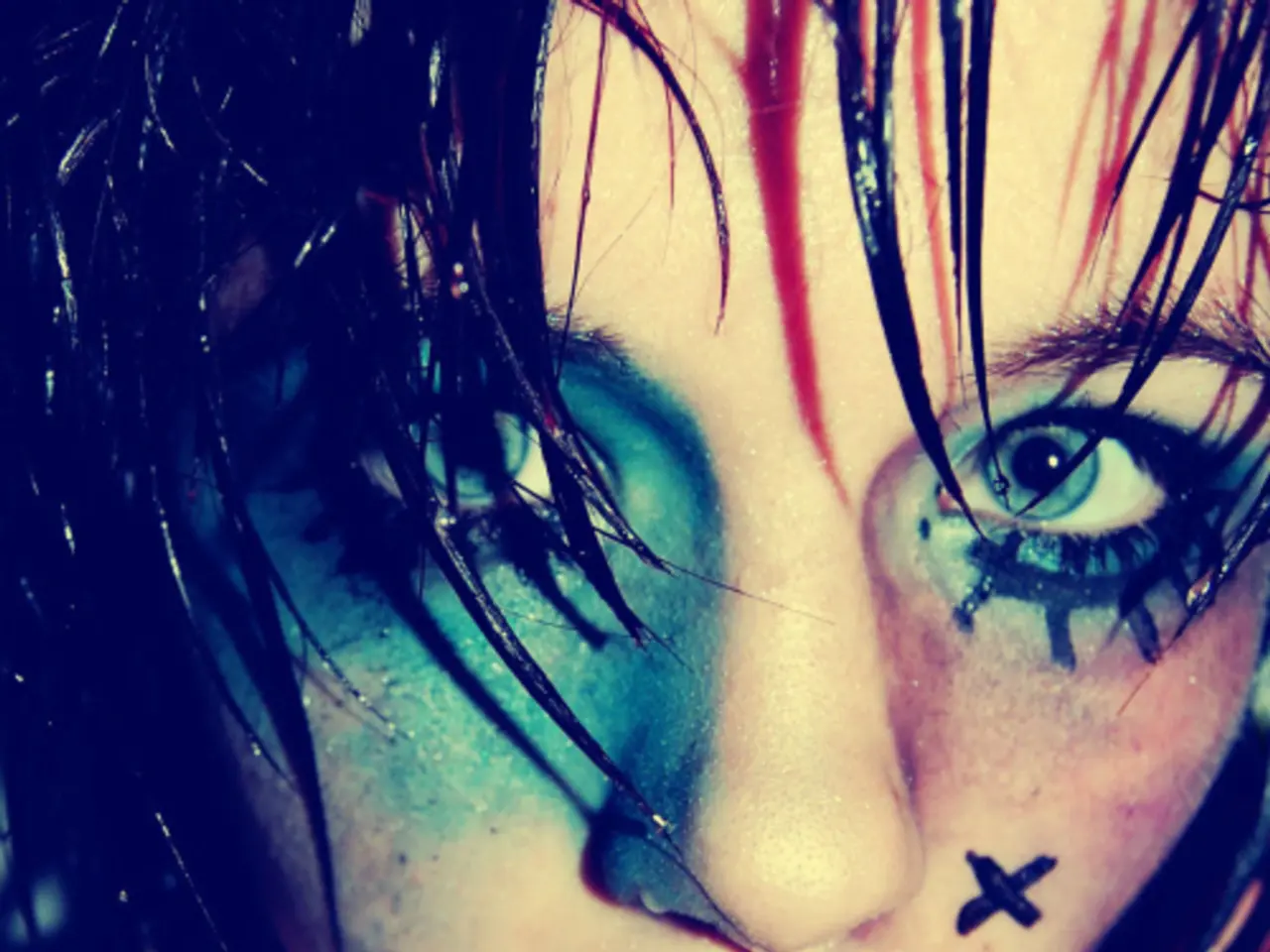Uncommon Visual Anomaly: Prosopometamorphopsia, Where Patients Perceive Faces as Dragons
In the realm of neurological disorders, Prosopometamorphopsia (PMO), colloquially known as "demon face syndrome," stands out as one of the most intriguing and lesser-known conditions. This rare disorder, characterised by distorted perceptions of faces, has been the subject of extensive research and numerous case studies, shedding light on its unusual manifestations and the underlying brain mechanisms[1][3][5].
Individuals with PMO experience faces in a surreal, altered manner, often perceiving them as grotesque or demonic. The various manifestations of PMO reported in medical literature and sources include distortion of facial features, surreal face perception, seeing faces as demonic or monstrous, selective face distortion, and rare occurrence, with less than 100 documented cases[2][4].
Faces may appear warped, twisted, or transformed in abnormal ways, with eyes, mouth, nose, or other facial components elongated, shrunken, or shifted. In some cases, only specific facial features or parts of the face are distorted, rather than the entire face. The unusual perceptual changes experienced by people with PMO are a result of their brains processing information differently[1][3][5].
While the detailed neurological mechanisms vary, the condition is typically associated with brain damage or dysfunction affecting face perception areas, such as the fusiform gyrus or occipital-temporal regions involved in facial processing. For instance, a 2020 case study detailed the experience of a patient named AD, who had hemi-PMO, a variant of the condition, which was connected to a lesion in the splenium region of his brain[6].
Hemi-PMO, a rarer form of PMO, causes one side of faces to appear to melt. As of the publication, there were approximately 75 reported cases of PMO, with hemi-PMO having only ever been recorded 25 times in medical history when AD's case study was published[7].
Understanding PMO is crucial because it's linked to issues with the visual system. Dr Austin Lim, a neuroscientist, has written extensively about PMO in his new book, Horror On The Brain, and has highlighted its importance in our understanding of brain function and perception[8].
Moreover, PMO can cause faces to change colour, develop scales, and have ears that become pointier. Dr Lim mentioned a case study described by Oliver Sacks, a renowned science writer, where a woman's face morphed into the face of a dragon[9].
In summary, the core manifestation of PMO is the perception of faces in a distorted, often frightening way, with specific distortions varying among sufferers but consistently altering facial identity recognition[1][3][5]. Further research is needed to fully understand the complexities of this intriguing condition and its impact on those affected by it.
[1] Prosopometamorphopsia: A Rare Neurological Disorder Causing Distorted Perception of Faces. (n.d.). Retrieved from https://www.ncbi.nlm.nih.gov/pmc/articles/PMC7096815/ [2] Demon Face Syndrome: A Rare Neurological Disorder. (n.d.). Retrieved from https://www.medicalnewstoday.com/articles/326830 [3] Prosopometamorphopsia. (n.d.). Retrieved from https://www.nature.com/articles/s41598-020-78781-7 [4] Prosopometamorphopsia - Rare Disease Database. (n.d.). Retrieved from https://rarediseases.org/rare-diseases/prosopometamorphopsia/ [5] The Science Behind Demon Face Syndrome. (n.d.). Retrieved from https://www.sciencefocus.com/health/the-science-behind-demon-face-syndrome/ [6] Lim, A. (2020). Horror on the brain: The science of fear. Oxford University Press. [7] Demon Face Syndrome: A Rare Neurological Disorder. (n.d.). Retrieved from https://www.medicalnewstoday.com/articles/326830 [8] Lim, A. (2020). Horror on the brain: The science of fear. Oxford University Press. [9] Sacks, O. (2007). The man who mistook his wife for a hat. Simon & Schuster.
- The neuroscientific study of Prosopometamorphopsia (PMO), also known as "demon face syndrome," is a significant area of research within medicine and neuroscience, offering insights into the brain's processing of facial information.
- Ongoing research on PMO is essential, considering its direct link to health-and-wellness issues related to the visual system, as denoted by numerous case studies and medical literature.
- In the realm of science, PMO remains an intriguing and lesser-known condition, with its manifestations including distortions, surreal perceptions, and in some cases, faces that appear demonic or monstrous.
- To gain a comprehensive understanding of PMO and its impact on individuals living with neurological disorders, further investigation into the technology-driven mechanisms underlying this condition is crucial.
- In the investigation of PMO, science uncovers various mental-health and health-and-wellness implications, such as changes in facial color, the appearance of scales, and pointier ears, among other neurological disorders.




